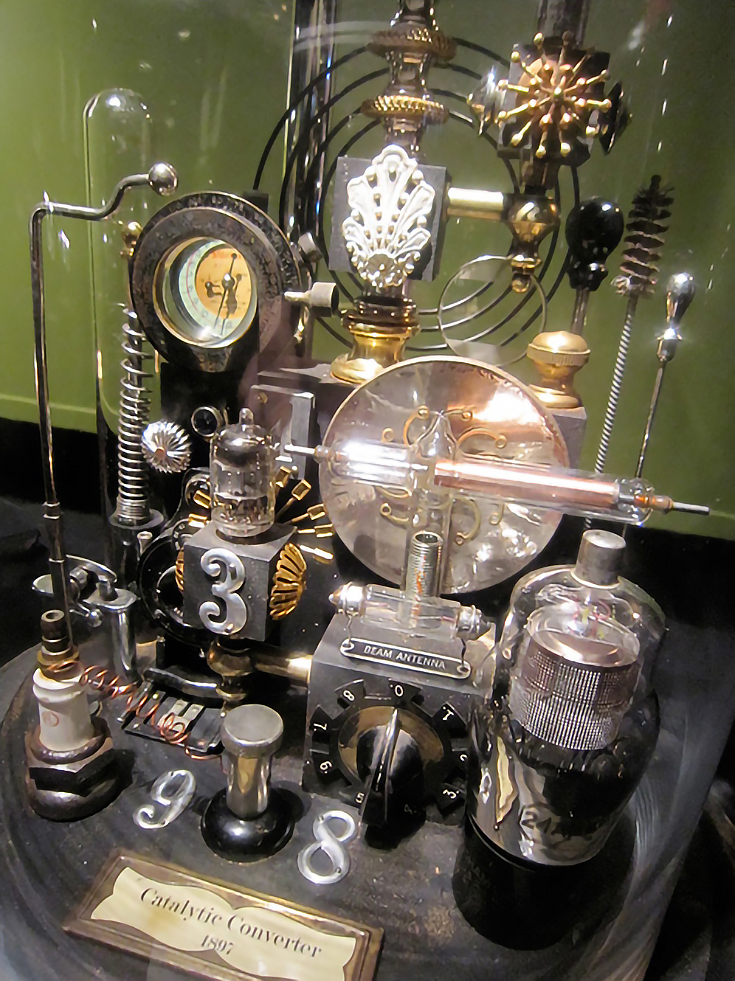One of the most significant cultural phenomena of the last decade, steampunk is now firmly established within the arts scene, enjoying mainstream respect at exhibitions and festivals worldwide.
Maybe you’re interested in steampunk art as a collector. . . or maybe you think you might be a steampunk artist and want to get your work in front of a steamy crowd!
Either way, here’s what you need to know about steampunk art and the steampunk scene in general:
What is steampunk?
Steampunk is an art, fashion, and cultural movement inspired by the industrial revolution. A form of nostalgic futurism, steampunk imagines a future where technology never expanded past steam engines and tesla coils.
Photo by Phil Campbell
The steampunk aesthetic combines imagery from the industrial era—machine parts like cogs and rivets, clockwork, and laboratory equipment—with Victorian art and design and futuristic concepts such as robotics and AI.
The result: ultra-modern throwbacks designed to delight the imagination and invoke the romance and brutality of the Age of Steam.
Steampunk was originally a literary genre, a subset of science fiction, with the first authors of the genre considered to be Jules Verne and H. G. Wells. In the 1980s, works such as Tim Power’s The Anubis Gates, and K. W. Jeter’s Infernal Devices
drew more attention to the genre, and over the last ten years, the Steampunk trend has exploded, in movies, fashion, and art.
Steampunk strives for inventiveness over historical accuracy. Many modern technological devices are “modded” (modified) with retro-futuristic elements—such as electric guitars and laptop computers—drawing from the design elements and processes popular during the Victorian era.
Materials Used in Steampunk
Steampunk artwork often incorporates found objects, especially original parts from the Victorian-era re-imagined as art objects.
Steampunk jewelry by Vivianne Draper
The most prominent material is metal, with brass, copper, steel, iron, and other industrial metals incorporated into jewelry, sculpture, and paintings. Wood, fabric (especially if it is printed with Victorian designs), and glass are also commonly seen.
Many artists combine the mechanical aspects of industrial machinery with natural elements such as animal skins, bones, and driftwood to create an interesting juxtaposition.
Inspiration
Steampunk artists are predominantly inspired by the art, design, literature, and technology of the Victorian era and early 20th century, along with the imaginative worlds of science fiction authors.
Steampunk art often explores commentary about the nature of art, science, and technology, and often has a satirical, dark, or dystopian view of the future.
Applications
Many steampunk artists explore themes of form and function, so a lot of steampunk art serves a dual purpose. Not only are they objects of art in their own right, but they might be made with objects that once had a function, remade, and modified to have a new function.
16GB Mechanical Memory Key by Artype Design
Often, the function of a steampunk object will be a satirical take on modern technology—for example, a computer keyboard made with typewriter keys.
Steampunk art has a distinct and unique style, and many artists are finding that defining their work as steampunk has given them an instant, built-in audience. With new exhibitions and events being held across the globe, right now is a great time to be a steampunk artist!
This post may contain affiliate links.



